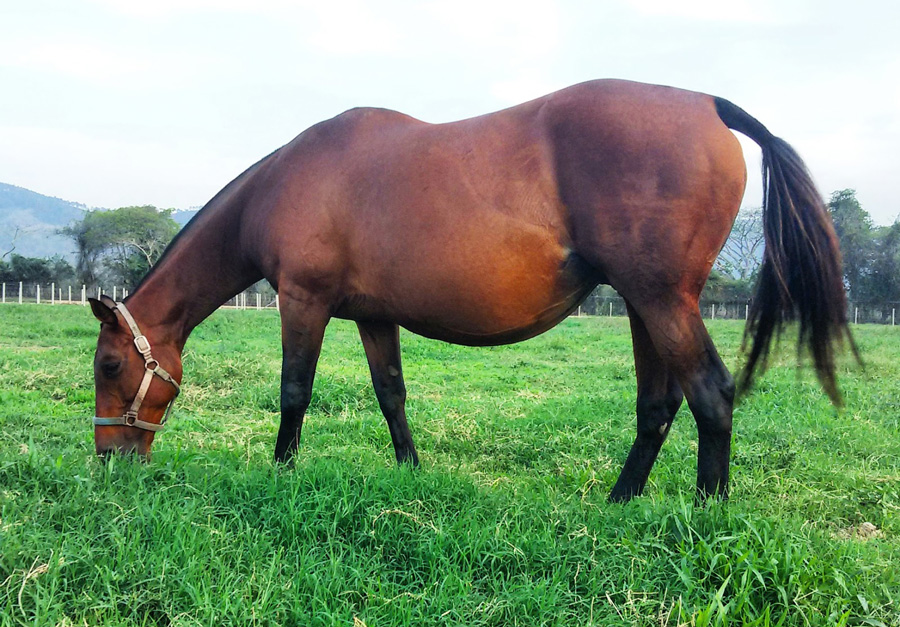The reproduction of a mare does not end when pregnancy is achieved, it is at that moment where a series of care must continue to bring the pregnancy to term and increase the chances of achieving a healthy calf.
Once the mare is pregnant, you should think about her taking into account her offspring; since the positive or negative that happens will have an impact on the fetus. Do not use any type of medication that could cause an abortion or harm the development of the fetus.
Dental care is something that should not be overlooked, because the digestion of food begins in the oral cavity; That is why it is important to keep your teeth in good condition for ideal chewing. It is recommended to perform dental treatment at least every 6 or 12 months depending on the animal’s needs.
When you want to reproduce an animal, good nutritional status is essential. The correct functioning of reproductive processes is given by hormones, and they require a supply of sufficient nutrients to meet the demand and be able to synthesize these hormones.
The ideal body condition for a mare to be bred should be between 6 and 7 on a scale of 1 to 9, where 1 is emaciation and 9 is obesity. The pregnancy and lactation stages have a high metabolic demand for nutrients.
The first 8 months of gestation can be considered maintenance feeding for the mare, however, in the last 3 months of pregnancy an increase in nutritional supply is required, since at this stage the fetus grows 60% of its size. final size and it is necessary to ensure an optimal size at birth.
Mares must have free access to fresh water and salt at libitum. In the first weeks of lactation, the mare produces 3% of her live weight in milk per day.
Deworming protocols can be made based on the results of periodic stool examinations and the presence and identification of eggs. Another option is to schedule deworming every 3 to 4 months, alternating the product to be used to reduce the resistance of parasites to medications. However, animals must be dewormed at least 2 times a year.
Active ingredients such as ivermectin, fenbendazole, pyrantel pamoate and others can be used in pregnant mares. It is important to read the instructions of the product manufacturer’s laboratory to prevent if it is not recommended in pregnant mares.
Vaccination of pregnant mares is recommended to generate immunity against the most common diseases in the geographical area where the animals are located.
The protection sought is for both the mare and the fetus and eventually to transfer immunity through colostrum to the newborn foal. Different microorganisms can put the life of the foal at risk in the first days of life and it will be unable to create its own immunity to defend itself, therefore; The mother must be vaccinated so that she can receive it while breastfeeding. Immunoglobulin G (IgG) is the one that is transmitted in the highest concentration.
It is recommended to vaccinate the mother mare 4 to 6 weeks before foaling, not applying more than 4 vaccines at the same time and waiting at least 2 weeks to administer others. Some of the problems that may exist are little response to generate immunity and therefore minimal transfer of antibodies to the newborn.
Vaccination with vaccines containing its inactive agent has no consequences for the mare. It is important to know that the live virus vaccine for Venezuelan Equine Encephalitis (VEE) and anthrax should not be administered to pregnant mares. Pregnant Mare
Some of the diseases that can be vaccinated 4 to 6 weeks before delivery are rotavirus (3 applications with an interval of 1 month starting at the 8th month of pregnancy); equine influenza, eastern and western equine encephalitis. West Nile virus, rabies, tetanus and others. According to the laboratory, equine herpes virus type 1 (EHV-1) will have its own way of application.
Checking the embryo and fetus is another aspect which must be evaluated in every pregnancy, since pregnancy is diagnosed on average on day 14, ultrasound examinations are usually done on day 27 to detect a heartbeat, day 45 when it becomes a fetus , day 60 to evaluate complementary corpora lutea, between days 60 and 70 fetal sexing can be done and from day 120 the placenta can be evaluated. Pregnant Mare
It is also important that upon palpation we feel movement of the fetus, amniotic fluid is anechoic in the ultrasound image.
You should be monitoring if there is vulvar discharge; increase in size of the mammary gland, secretion of milk as this may be indicative of abortion or premature birth.
The care of the pregnant mare must be continuous, reducing the chances of stress; space where you can walk freely, proper management, since you must remember that everything will be reflected in the development of the fetus.
Veterinarian Eduardo Prado Carroz
University of Zulia, Faculty of Veterinary Sciences (FCV)
Member of the College of Veterinary Doctors of the state of Zulia, no. 2483
For those who may be interested, you can contact us through social networks, on Instagram as @espacio_equino
Bibliographic references
- Brinsko, S.P., Blanchard, T.L., Varrer, D.D., Schumacher, J., Love C.C., Hirricks, K. and Hartman, D., 2010. Manual of Equine Reproduction. 3rd Edition. Mosby Elsevier, Oxford


Recent Comments